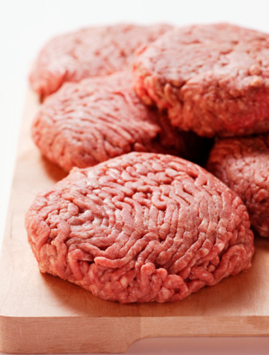Not just a problem for Toronto or Tori Spelling, Belgium also apparently has some issues with soft-serve and regular ice cream.
Albert sent along a link to a recent report by Test-Achats, a Belgian-based consumer group that anonymously sent researchers to 69 points of sale for ice cream and soft-serve in Belgium during the summer of 2008. Amy translated, and highlights of the report are below.
.jpg) “Attention was essentially directed towards touristic sites like the Côte, the Ardennes, and various country towns. They bought ice cream cones and soft-serve. While making the purchases, they took the opportunity to evaluate the hygiene at the point of sale as well as of the personnel, the place where the counter or the soft-serve dispenser was located, the conditions for rinsing the ice cream scoop, etc. Immediately after the purchase, and in appropriate sterile and temperature conditions, the ice cream was taken to the laboratory to undergo detailed bacteriological testing. …
“Attention was essentially directed towards touristic sites like the Côte, the Ardennes, and various country towns. They bought ice cream cones and soft-serve. While making the purchases, they took the opportunity to evaluate the hygiene at the point of sale as well as of the personnel, the place where the counter or the soft-serve dispenser was located, the conditions for rinsing the ice cream scoop, etc. Immediately after the purchase, and in appropriate sterile and temperature conditions, the ice cream was taken to the laboratory to undergo detailed bacteriological testing. …
Apparent cleanliness was rarely noted during our visits: only 18 points of sale received a good or very good score for this category. In 8 cases, general hygiene at the point of sale was simply unacceptable… and added to that was a serious lack in the staff’s personal hygiene. A serious problem that was already underscored by Test Achats: the ice cream scoop. It was only rinsed under running water in 6 of the points of sale. This is however fundamental for serving ice cream in good hygienic conditions. Too often, the scoop was left resting in obviously unclean water or it wasn’t, in any case, cleaned before service. Finally, it is unacceptable that the ice cream counter or the soft-serve machine be located in full sunlight, exposed to outside air or that the ice cream be accessible to or touched by clients. However, this was the case in 11 locations.
The testing of 5 specific bacteriological parameters as well as the number of total germs gives a realistic image of the hygienic quality of the 70 samples analyzed. Fortunately the presence of Salmonella and Listeria was never detected, on the other hand, Escherichia coli (which can provoke enteritis or diarrhea) was detected in three cases. In two cases, staphylococcus was present, proof of a lack of the personnel’s hygiene. …
Throughout the years and through successive studies, the results are obvious: the hygienic quality of ice cream is getting worse: 35% of ice cream cones and 61% of soft-serve are bad to mediocre. This is a completely unacceptable situation."

.jpg)
.jpg)
.jpg) In the Parisian restaurant La Fontaine de mars, where Obama ate dinner on Saturday evening, the cooks were stunned: an American secret service member tasted the dishes before they were served to the President of the United States. Nonetheless, this is a precautionary method as old as the earth, even predating Nero and Cleopatra. Who would dare get offended? God save Obama!
In the Parisian restaurant La Fontaine de mars, where Obama ate dinner on Saturday evening, the cooks were stunned: an American secret service member tasted the dishes before they were served to the President of the United States. Nonetheless, this is a precautionary method as old as the earth, even predating Nero and Cleopatra. Who would dare get offended? God save Obama! Amy has written while at this point in history simply having food was a luxury, the formerly starving peasant, Ugo, learns that he can no longer enjoy his food. Although now an expert at identifying ingredients and seasonings (right up there with today’s top food pornographers) he is constantly afraid of being struck by a mystical potion. His backwards, yet perhaps scientifically accurate, strategy is to slowly expose himself to all sorts of potions and poisons to build up (immuno) resistance should he actually be struck.
Amy has written while at this point in history simply having food was a luxury, the formerly starving peasant, Ugo, learns that he can no longer enjoy his food. Although now an expert at identifying ingredients and seasonings (right up there with today’s top food pornographers) he is constantly afraid of being struck by a mystical potion. His backwards, yet perhaps scientifically accurate, strategy is to slowly expose himself to all sorts of potions and poisons to build up (immuno) resistance should he actually be struck. 
 A retrospective cohort study, conducted through self-administered questionnaires among approximately 3,000 students and teachers who had participated in two meals in 36 schools concerned, was initiated to confirm the existence of a foodborne outbreak and its origin. …
A retrospective cohort study, conducted through self-administered questionnaires among approximately 3,000 students and teachers who had participated in two meals in 36 schools concerned, was initiated to confirm the existence of a foodborne outbreak and its origin. …  A quantitative risk assessment for the consumption of beef burgers containing STEC by the Agence Francaise De Securite Sanitaire Des Aliments
A quantitative risk assessment for the consumption of beef burgers containing STEC by the Agence Francaise De Securite Sanitaire Des Aliments The tests done on the child indicated he or she was infected with E. coli.
The tests done on the child indicated he or she was infected with E. coli. It was worth the wait.
It was worth the wait.